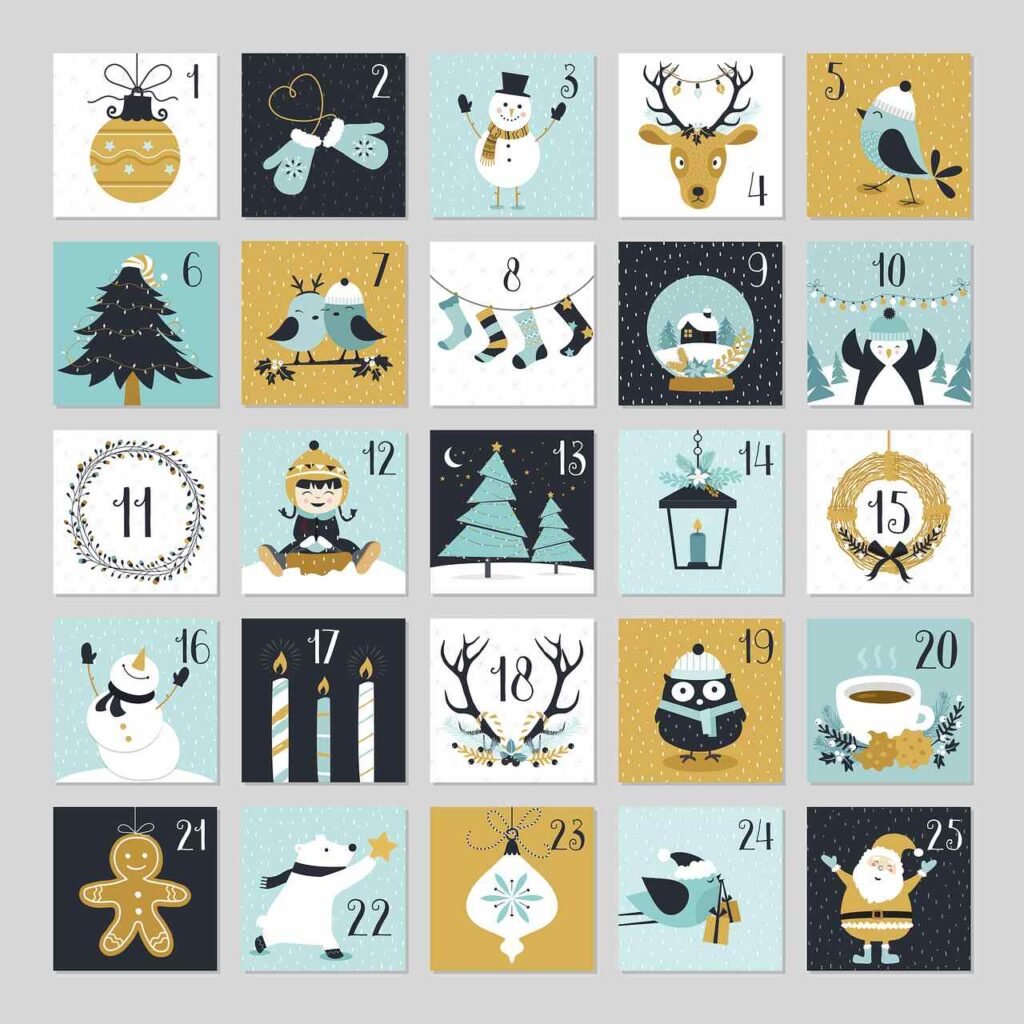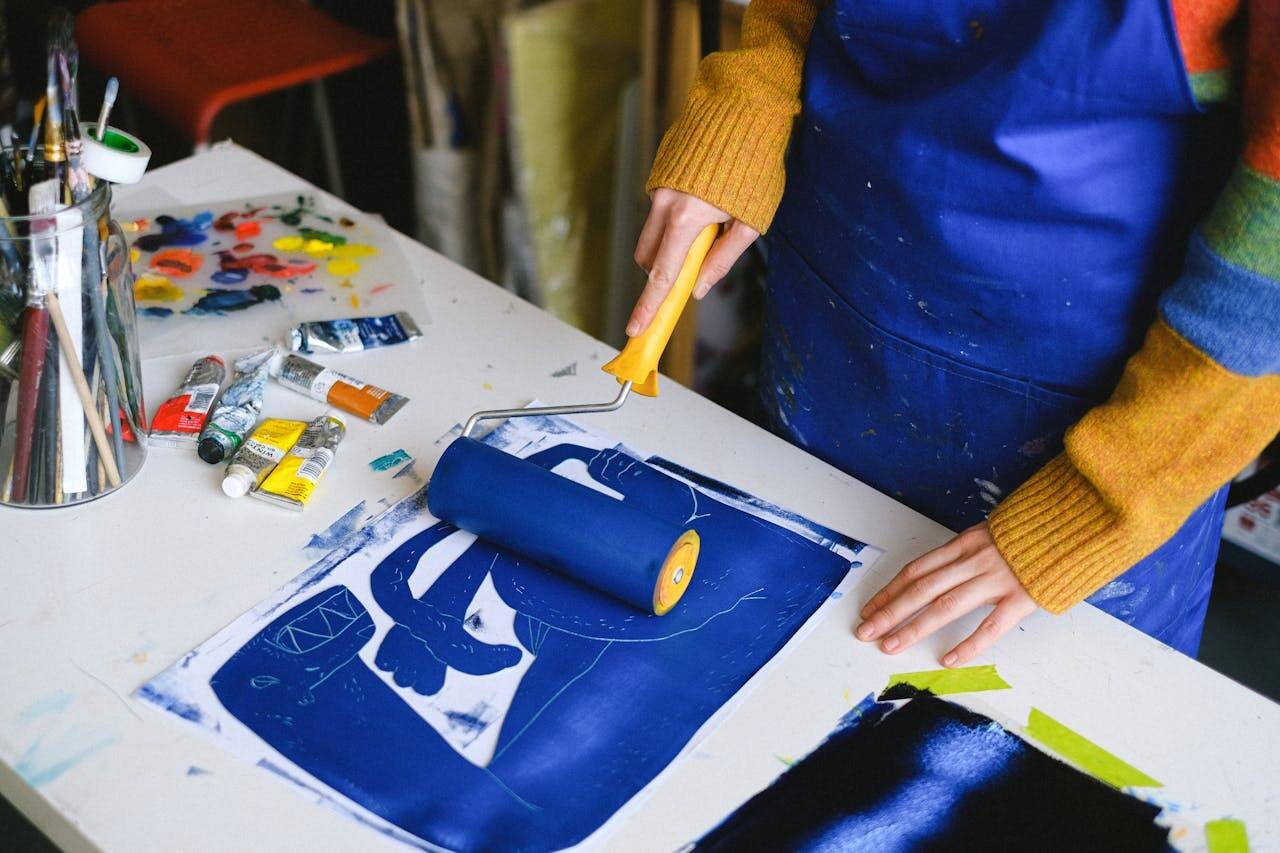In the digital age, print marketing might seem old-fashioned, but it’s far from obsolete. Creative print marketing can capture attention, build brand awareness, and create lasting impressions in ways that digital marketing sometimes can’t. Tangible materials like brochures, flyers, and business cards offer a personal touch that digital ads lack. Let’s dive into some innovative print marketing ideas that will help your brand stand out and make a significant impact on your audience.
Understanding the Power of Print Marketing
The Tangible Advantage
Print marketing offers a physical experience that digital media cannot replicate. When people hold something tangible, like a beautifully designed brochure or a striking postcard, it creates a lasting impression.
The tactile nature of print materials engages multiple senses, making the message more memorable. This physical connection can enhance brand recall and foster a deeper relationship with your audience.
Trust and Credibility
Printed materials often convey a sense of trust and credibility. High-quality print pieces suggest that a brand has invested time and resources into creating something valuable.
This can be particularly important for businesses trying to establish their reputation or differentiate themselves from online competitors. A well-designed print piece can reflect your brand’s professionalism and attention to detail.
Targeted Reach
Print marketing allows for highly targeted campaigns. By distributing materials in specific locations or to particular demographics, you can ensure that your message reaches the right people.
This targeted approach can be more effective than broad digital campaigns, leading to higher engagement and conversion rates. Whether it’s a direct mail campaign or distributing flyers in a local area, print marketing can be tailored to reach your ideal audience.
Designing Eye-Catching Brochures
Compelling Design Elements
A brochure is more than just a piece of paper; it’s a mini-portfolio that showcases your brand’s offerings. Start with a compelling design that captures attention. Use high-quality images, vibrant colors, and clean layouts.
Ensure that the design aligns with your brand identity and conveys your message clearly. Consider using unique folds or shapes to make your brochure stand out even more.
Clear and Concise Messaging
Your brochure should communicate your message clearly and concisely. Avoid cluttering it with too much information. Instead, focus on key points that highlight the benefits of your products or services.
Use headings, subheadings, and bullet points to make the content easy to read. Remember, the goal is to engage the reader and encourage them to take the next step, whether it’s visiting your website or contacting you for more information.
Quality Printing
The quality of the paper and printing can make a significant difference in how your brochure is perceived. Invest in high-quality printing to ensure that your brochure looks professional and feels substantial.
Consider using special finishes like gloss, matte, or embossing to add a touch of elegance. High-quality print materials not only look better but also reflect positively on your brand.
Utilizing Direct Mail Campaigns
Personalized Direct Mail
Direct mail can be incredibly effective, especially when it’s personalized. Use variable data printing to customize each piece with the recipient’s name and other relevant information.
Personalization makes the recipient feel valued and increases the likelihood of engagement. Combine this with a compelling offer or call-to-action to drive responses.
Creative Formats
Think beyond the traditional postcard or letter. Use creative formats that surprise and delight recipients. For example, consider sending a mini booklet, a fold-out poster, or a pop-up card.
These unique formats can capture attention and make your direct mail piece more memorable. The more creative and unexpected the format, the more likely it is to stand out in a stack of mail.
Tracking and Measuring Success
Include a way to track the success of your direct mail campaign. This could be a unique promo code, a QR code, or a specific landing page URL.
Tracking allows you to measure the effectiveness of your campaign and gather valuable data on response rates and conversions. Use this information to refine your future campaigns and improve their performance.
Crafting Unique Business Cards
Memorable Designs
A business card is often the first impression someone has of your brand. Make it memorable with a unique design that stands out. Use bold colors, interesting textures, and creative layouts.
Consider using both sides of the card to maximize the space. A striking design not only catches the eye but also encourages the recipient to keep your card rather than tossing it away.
Interactive Elements
Add interactive elements to your business card to make it more engaging. This could be a QR code that links to your website or a special offer, a fold-out section with additional information, or a card that doubles as a useful tool (like a mini calendar or a bookmark).
Interactive elements make your business card more functional and memorable.
High-Quality Materials
The material of your business card says a lot about your brand. Invest in high-quality card stock to give your card a substantial feel. You can also explore unconventional materials like metal, wood, or plastic to really stand out.
The tactile experience of a high-quality or unique material can leave a lasting impression on the recipient.
Leveraging Posters and Banners
Strategic Placement
Posters and banners are excellent for high-visibility marketing. Place them in strategic locations where your target audience is likely to see them. This could be at local events, in high-traffic areas, or near complementary businesses.
The key is to ensure they are seen by as many potential customers as possible.
Bold and Clear Messaging
Your poster or banner needs to grab attention quickly. Use bold colors, striking images, and clear, concise messaging. Ensure that your main message and call-to-action are easily readable from a distance.
A compelling headline, an attractive image, and a clear call-to-action can make your poster or banner highly effective.
Durability and Quality
Use durable materials for your posters and banners, especially if they will be displayed outdoors. Weather-resistant materials ensure that your marketing remains in good condition, regardless of the elements.
High-quality printing also ensures that your images and text remain sharp and vibrant, making your message clear and attractive.
Creating Impactful Flyers and Leaflets
Eye-Catching Design
Design your flyers and leaflets to be visually appealing. Use high-quality images, bold typography, and a clean layout. The design should reflect your brand identity and catch the eye of anyone who sees it.
A visually stunning flyer is more likely to be picked up and read.
Targeted Distribution
Distribute your flyers and leaflets in locations where your target audience is likely to be. This could be at events, in local cafes, or through direct mail.
The more targeted your distribution, the higher the chances of reaching potential customers who are interested in your offerings.
Clear Call to Action
Every flyer and leaflet should have a clear call to action. Whether it’s visiting your website, calling for more information, or attending an event, make sure it’s easy for the reader to understand what you want them to do next.
A strong call to action can significantly increase the effectiveness of your print marketing.
Designing Branded Merchandise
Functional Items
Branded merchandise should be functional and useful to the recipient. Items like pens, notebooks, tote bags, and water bottles are always appreciated and used frequently.
The more useful the item, the more often your brand will be seen, reinforcing brand awareness every time the item is used.
High-Quality Products
Invest in high-quality merchandise that reflects well on your brand. Cheap or poorly made items can create a negative impression. High-quality products, on the other hand, show that your brand values quality and attention to detail.
This positive association can enhance your brand image and foster customer loyalty.
Creative Branding
Get creative with how you incorporate your branding on merchandise. Instead of just slapping your logo on an item, think about how you can make it visually appealing and relevant to the item’s function.
For example, a fitness brand could design a water bottle with motivational quotes along with their logo. Creative branding makes the merchandise more attractive and increases the likelihood that it will be used and seen.
Utilizing Print Magazines and Newspapers
Targeted Publications
Advertising in print magazines and newspapers can be very effective, especially when you choose publications that cater to your target audience. Identify magazines and newspapers that align with your industry or demographic and place ads in those.
This ensures that your message reaches a relevant audience who are more likely to be interested in your products or services.
Compelling Advertisements
Create compelling advertisements that stand out on the page. Use high-quality images, bold headlines, and clear calls-to-action. The design should be eye-catching and the message should be concise.
Include a special offer or incentive to encourage readers to take action.
Advertorials
Consider placing advertorials, which are advertisements written in the style of editorial content. These pieces provide valuable information or tell a story while subtly promoting your brand.
Advertorials can be more engaging than traditional ads because they offer useful content that readers are more likely to pay attention to.
Implementing Direct Mail Catalogs
Comprehensive Product Listings
Direct mail catalogs are a great way to showcase a wide range of products. Ensure your catalog is well-organized with comprehensive product listings, including high-quality images, detailed descriptions, and pricing.
Make it easy for customers to understand what you offer and how they can purchase your products.
Seasonal Themes
Create catalogs with seasonal themes to make them more relevant and timely. For example, a holiday catalog can feature gift ideas, while a summer catalog might highlight outdoor products.
Seasonal themes can create a sense of urgency and excitement, encouraging customers to make a purchase.
Tracking and Follow-Up
Include a way to track the effectiveness of your catalog, such as unique promo codes or QR codes. Follow up with customers who have received your catalog through email or direct mail to encourage them to make a purchase.
Tracking and follow-up help you measure the success of your catalog and optimize future editions.
Designing Custom Stickers and Decals

Creative Designs
Custom stickers and decals can be a fun and effective way to promote your brand. Create eye-catching designs that people will want to stick on their belongings.
The more creative and attractive the design, the more likely people are to use them, spreading your brand message wherever they go.
Strategic Distribution
Distribute your stickers and decals strategically. Include them with purchases, give them away at events, or place them in high-traffic areas.
The goal is to get them into the hands of people who will use them and display them in visible locations, increasing your brand’s visibility.
Brand Awareness
Use stickers and decals to increase brand awareness. Include your logo, tagline, and website on each sticker to ensure that anyone who sees it knows how to find your business.
Stickers are a low-cost, high-visibility marketing tool that can reach a wide audience.
Creating Unique Invitations and Announcements
Personalized Invitations
For special events, create personalized invitations that reflect the importance of the occasion. High-quality, beautifully designed invitations make recipients feel valued and increase the likelihood that they will attend your event.
Use luxurious paper, elegant fonts, and professional printing to make a strong impression.
Event Announcements
Announce upcoming events with eye-catching print materials. Posters, flyers, and mailed announcements can generate excitement and increase attendance.
Include all necessary details like date, time, location, and how to RSVP. Attractive design and clear information can make your announcements stand out.
Follow-Up
After the event, follow up with attendees using print materials. Send thank-you cards, recap brochures, or surveys to gather feedback. Following up keeps your brand top of mind and shows appreciation, fostering positive relationships with your audience.
Utilizing Door Hangers
Targeted Distribution
Door hangers can be an effective way to reach a local audience. Distribute them in neighborhoods where your target customers live.
This direct approach ensures that your message gets into the hands of potential customers right at their doorstep.
Clear Messaging
Design door hangers with clear, concise messaging. Highlight your main offer or call to action prominently. Use attractive visuals and easy-to-read text to ensure that your message is quickly understood. A strong call to action can encourage immediate responses.
Special Offers
Include special offers or discounts on your door hangers to entice recipients to take action. Limited-time offers create a sense of urgency and can increase response rates.
Ensure that the offer is compelling enough to motivate recipients to visit your store or contact you for more information.
Printing Custom Calendars

Functional and Promotional
Custom calendars are functional items that can keep your brand in front of customers all year long. Design calendars with attractive images and useful information.
Each month can feature different products, services, or promotions, keeping your brand top of mind throughout the year.
Distribution
Distribute custom calendars to your customers as a free gift. They can be given away at events, included with purchases, or mailed to loyal customers.
A well-designed calendar is something people will use daily, providing constant exposure for your brand.
Customization
Offer customization options for your calendars to make them more personal and relevant to your customers. This could include adding important dates, personalized messages, or custom images.
Personalized calendars are more likely to be appreciated and used, increasing their promotional value.
Implementing Print Coupons
Attractive Design
Print coupons should be attractively designed to catch the recipient’s eye. Use bold colors, clear text, and high-quality images. Make sure the discount or offer is prominently displayed, and include a clear call to action.
The design should entice recipients to use the coupon.
Easy Redemption
Ensure that your print coupons are easy to redeem. Provide clear instructions on how and where to use the coupon. Consider using scannable barcodes or QR codes to streamline the redemption process.
The easier it is for customers to use the coupon, the more likely they are to take advantage of the offer.
Tracking Success
Track the success of your print coupon campaigns by including unique codes or identifiers on each coupon. This allows you to monitor which promotions are most effective and understand customer behavior.
Use this data to refine future coupon campaigns and improve their effectiveness.
Enhancing Print Marketing with Digital Integration
QR Codes
Integrate QR codes into your print marketing materials to bridge the gap between print and digital. QR codes can lead to your website, a special landing page, a video, or an online store.
This not only enhances the interactivity of your print materials but also allows you to track engagement and measure the effectiveness of your print campaigns. Make sure the destination is mobile-friendly to provide a seamless experience for users.
Augmented Reality (AR)
Use augmented reality to create interactive print materials. AR can transform a static print piece into a dynamic experience by overlaying digital content.
For example, a brochure could come to life with a video demonstration when viewed through an AR app. This technology can significantly enhance engagement and make your print marketing memorable.
Personalized URLs (PURLs)
Create personalized URLs for your print campaigns to provide a tailored online experience for each recipient. PURLs can be used in direct mail, brochures, and flyers to direct recipients to personalized landing pages.
This allows you to track individual responses and gather valuable data on user behavior, helping you refine your marketing strategies.
Sustainable Print Marketing
Eco-Friendly Materials
Show your commitment to sustainability by using eco-friendly materials in your print marketing. Recycled paper, vegetable-based inks, and biodegradable materials can reduce your environmental impact.
Highlight your eco-friendly practices in your marketing materials to appeal to environmentally conscious consumers.
Print-On-Demand
Consider using print-on-demand services to reduce waste and manage inventory more efficiently. Print-on-demand allows you to produce materials as they are needed, minimizing excess and ensuring that your content is always up-to-date.
This approach can be particularly useful for direct mail campaigns and promotional materials.
Local Printing
Partner with local printers to reduce shipping emissions and support the local economy. Local printing can also shorten turnaround times and improve quality control.
By emphasizing your local partnerships, you can build a stronger connection with your community and demonstrate your commitment to local businesses.
Measuring the Effectiveness of Print Marketing

Tracking Responses
Implement tracking mechanisms to measure the success of your print marketing campaigns. Use unique promo codes, QR codes, PURLs, and response cards to monitor engagement and conversions.
Tracking responses allows you to gather data on what works and what doesn’t, helping you optimize future campaigns.
Customer Surveys
Conduct customer surveys to gather feedback on your print materials. Ask recipients about their perceptions, what they liked, and what could be improved.
Surveys can provide valuable insights into the effectiveness of your design, messaging, and overall approach.
Analyzing ROI
Analyze the return on investment (ROI) of your print marketing campaigns to determine their financial effectiveness. Compare the cost of production and distribution with the revenue generated from the campaign.
This analysis helps you understand the value of print marketing and make informed decisions about future investments.
Wrapping it up
Print marketing remains a vital tool for capturing attention and creating lasting impressions. By employing creative designs, high-quality materials, and interactive elements, your print campaigns can stand out and engage your audience effectively.
Integrating digital technologies like QR codes and AR, focusing on sustainability, and using personalized approaches can enhance the impact of your print materials. Combining these strategies ensures that your print marketing complements your overall marketing efforts, drives engagement, and delivers measurable results.
READ NEXT:
- Empowering Social Media Post Ideas for International Women’s Day
- Creative Social Media Post Ideas for Digital Marketing Agencies
- Tech-Savvy Social Media Content Ideas
- Spring into Action with Social Media Ideas for April
- Autumnal Social Media Ideas for October






















Comments are closed.